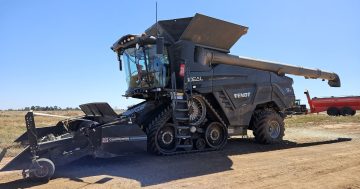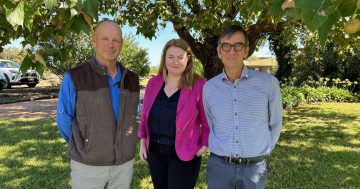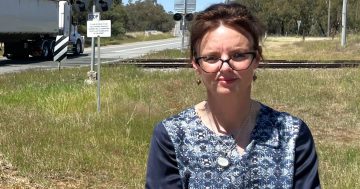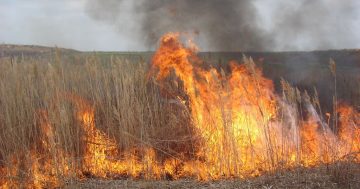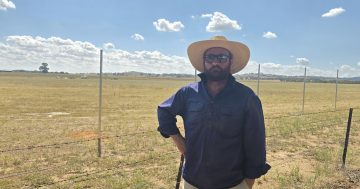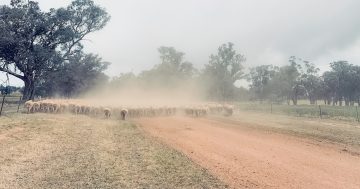
Nathan, Margo and Gerard Crowley on the farm where rice was first grown in the Riverina. Photo: Oliver Jacques.
Exactly 100 years since the first rice crop was planted in the Riverina, Bilbul’s Crowley family is continuing a legacy pioneered on Farm 344 back in 1924.
But as nut farms and large corporations start to dominate the region’s agriculture, there are concerns over how long locally grown rice will survive into its second century.
“In the early 1920s, there were originally six farms that started to grow rice between Leeton and Griffith,” fourth generation rice farmer Nathan Crowley says.
“The seeds were from California and provided by the NSW Government to families who applied for them. We still grow rice on the land that was originally owned by Sid Marchinton, one of the first rice farmers.”
According to Gary Lewis’s book An Illustrated History of the Riverina Rice Industry, Mr Marchinton used a wheel-driven harvester pulled by six horses for his first crop. All up, 222 tonnes of rice were produced in the first season.
Nowadays, the Riverina region produces an average of 750,000 tonnes of rice per year, around 98 per cent of Australia’s total production.
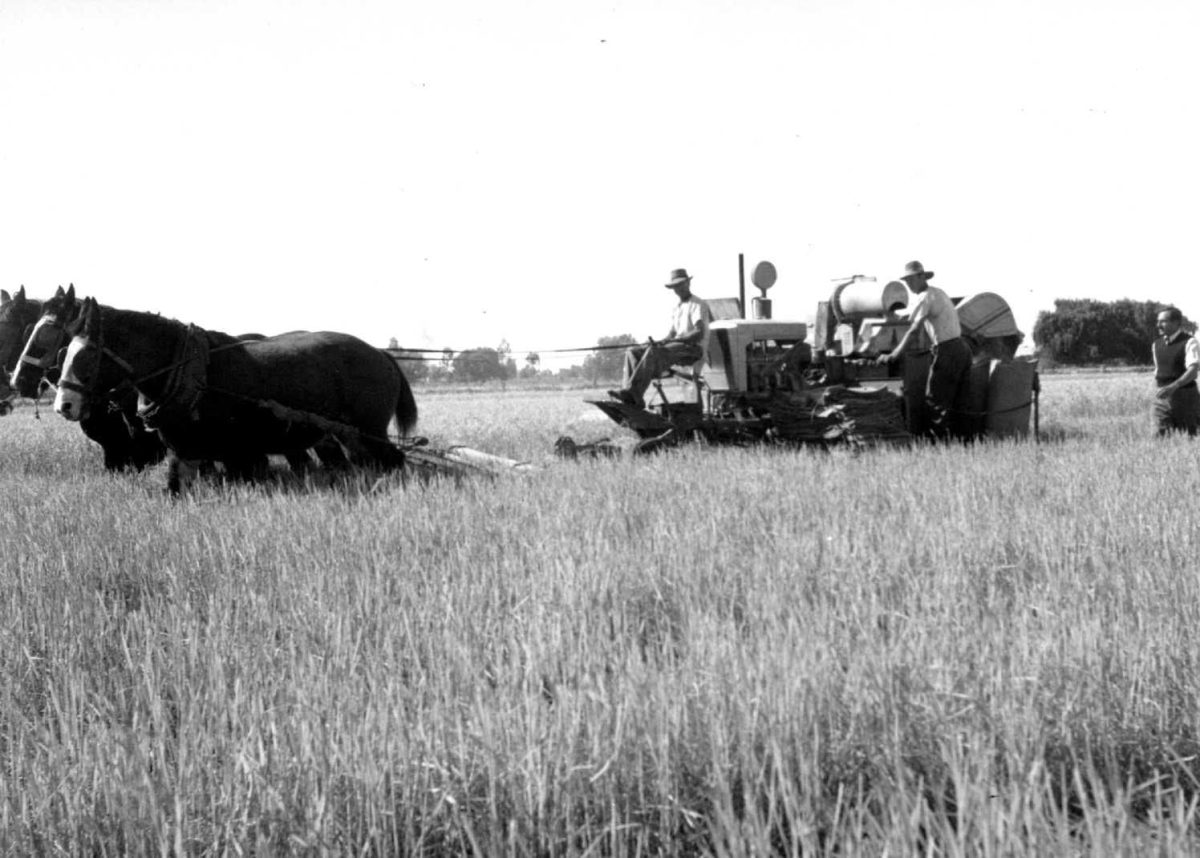
Rice harvesting in Griffith in the 1950s. Photo: Ray Turnell/Old Griffith NSW Album Facebook.
Mr Crowley’s family have farmed rice in Bilbul for the past 36 years, warding off the challenges of multiple droughts, government water buybacks, climate change and the increased prevalence of multinational water traders.
“Farmers are the biggest gamblers on earth,” Nathan’s mum Margo says.
“We plant the crop – we’ve got no idea how much money we’re going to get from it; we don’t even know if we’ll get enough water to finish our crops and we have no control over the markets.”
Mrs Crowley said that while things had been getting tough, she’d always felt a loyalty to the industry of her grandfather Harold Chauncy, one of the first rice farmers in the Murrumbidgee Irrigation Area.
“During the last drought, we would’ve been better off selling our water. But we made the decision to grow rice, just to support the industry. It may sound stupid, but that comes from being the third-generation rice growers.”
Over the past decade, several small rice farmers have left the industry, often replaced by large agribusinesses specialising in more profitable permanent plantations such as almonds. Nathan, however, believes there needs to be a place for rice in Australian agriculture.
“It’s a food staple; people can live on rice,” he said. “That’s one of the reasons we want to grow it. The margins are really tight for rice, but we have had longevity.
“Every industry has its ebbs and flows. People might be ripping out grape vines to plant oranges, whereas rice you can plant it next year but the next year you don’t have to do so.”
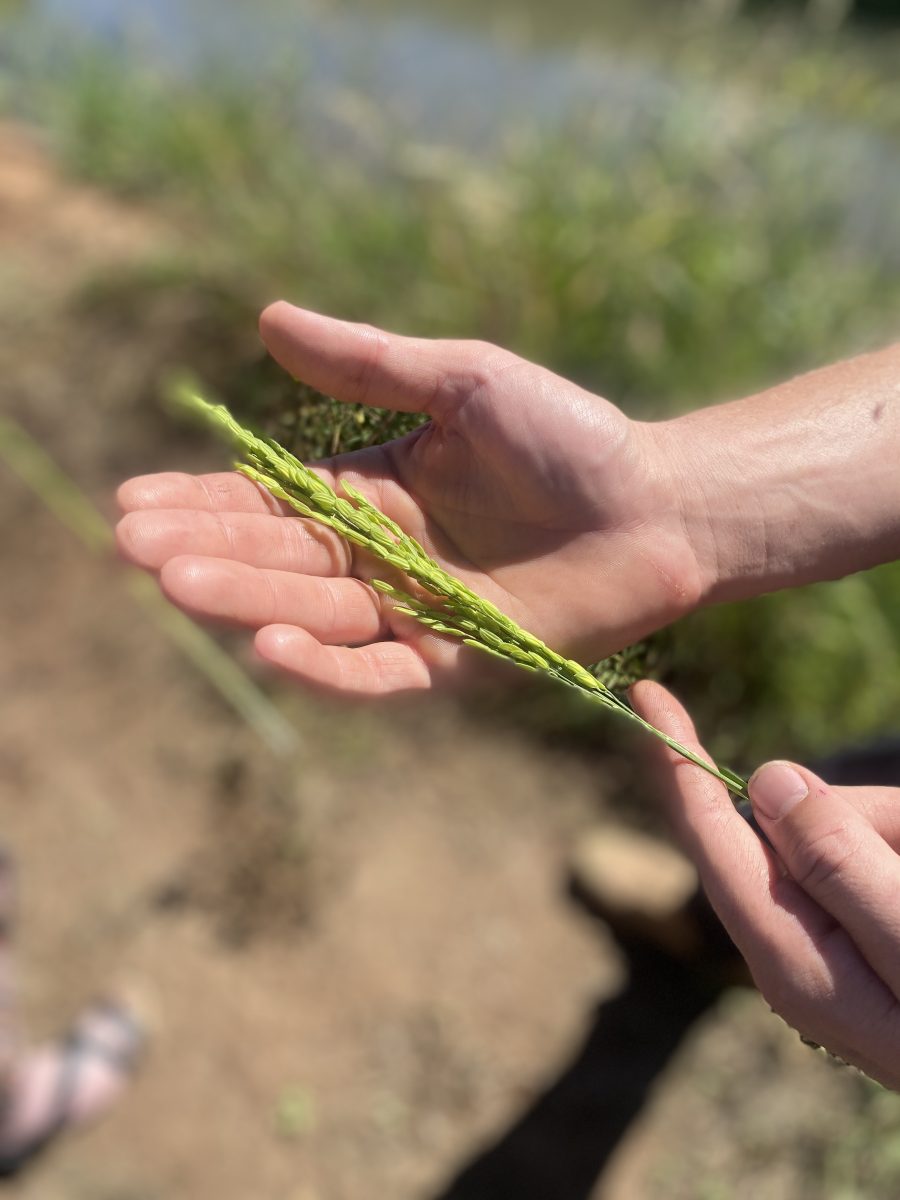
Nathan Crowley wants to keep growing rice because it’s a food staple. Photo: Oliver Jacques.
Nathan left Griffith during the Millennium Drought to work in construction in Melbourne, but returned to be close to his parents Gerard and Margo and help them out with the farm.
“Our son’s return has given us a new lease of life,” Margo said. “If he didn’t come back, I reckon we would have sold.”
She is hopeful, but apprehensive about how far her industry will last into its second century.
“I hope we’ll still be farming in 20 years; I thought COVID would’ve been a wake-up that we need to produce food to feed Australians and not be reliant on China,” Margo said.
“If they keep taking water away from irrigation, they’re taking away our food supply. All we want to do is to produce enough food for our country.”









